Portland (pop. 652,503; met. area pop. 2,512,859) is Oregon’s largest city and its major center of industry and trade. It also is an important West Coast port. Portland is on Oregon’s northern border, near the junction of the Columbia and Willamette rivers. About half of Oregon’s people live in the city’s metropolitan area. 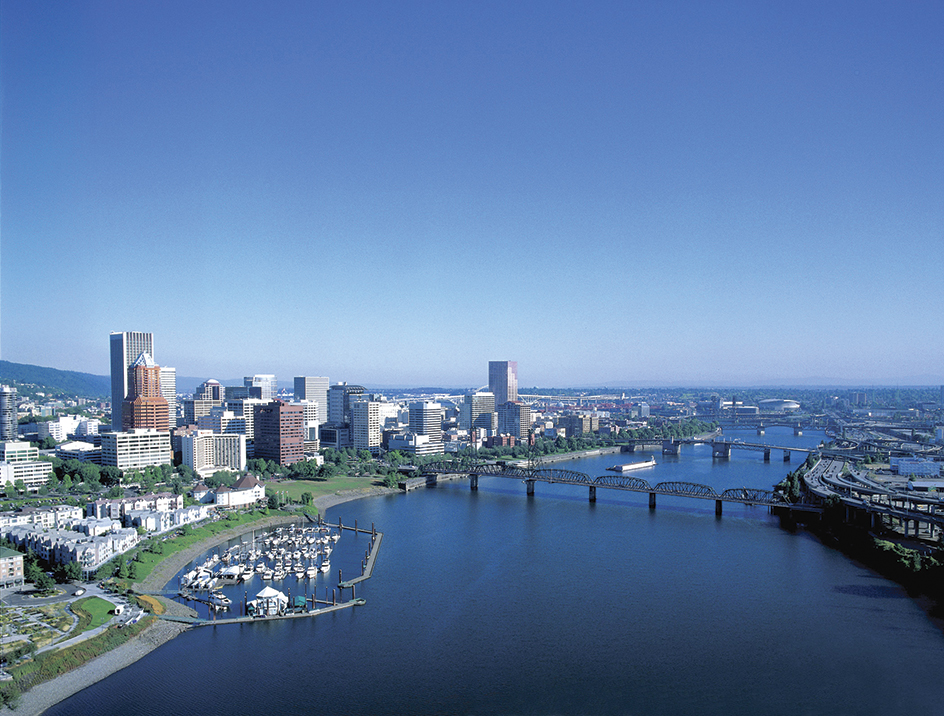
Two New England land developers, Asa L. Lovejoy of Boston and Francis W. Pettygrove of Portland, Maine, founded Portland in 1845. Both believed that a great port city would someday stand on the site. Lovejoy and Pettygrove each wanted the new settlement to be named for his own home city. To settle the matter, they flipped a coin. Pettygrove won.
Portland is known as the City of Roses because of its many public and private rose gardens. Roses thrive in Portland’s mild, moist climate. For the monthly weather in the city, see Oregon (Climate) .
The city.
Portland, the county seat of Multnomah County, lies at the northern end of the fertile Willamette Valley. Mountains of the Coast Range rise 20 miles (32 kilometers) west of the city. The view to the east of Portland features snow-capped Mount Hood, about 50 miles (80 kilometers) away in the Cascade Range. Portland covers 145 square miles (376 square kilometers), including 12 square miles (31 square kilometers) of inland water. The Portland-Vancouver-Hillsboro metropolitan area consists of Clackamas, Columbia, Multnomah, Washington, and Yamhill counties in Oregon and the Clark and Skamania counties in Washington. 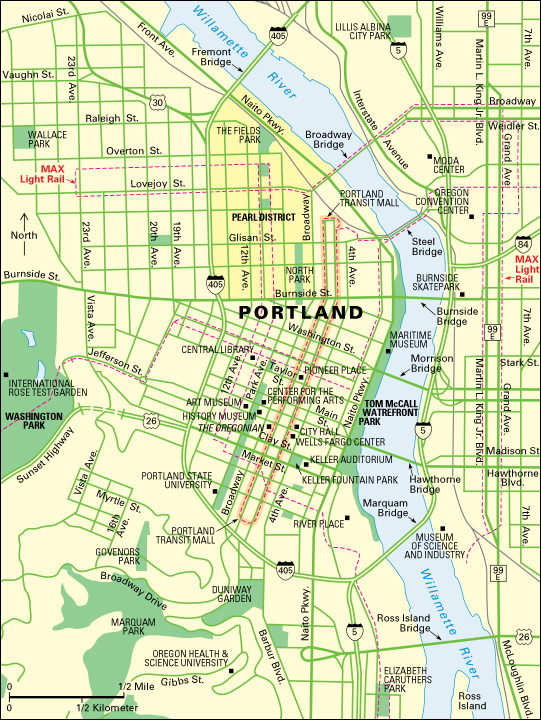
Portland’s main shopping district lies on the west bank of the Willamette River. This downtown area includes the 40-story Wells Fargo Center, Oregon’s tallest building. The nearby Keller Fountain Park, next to the Keller Auditorium, has waterfalls and wading pools.
Most of Portland’s people were born in the United States. African Americans, American Indians, and people of Asian ancestry make up about 15 percent of the population.
Economy.
Portland has long been known for its robust manufacturing and shipping industries, but service industries employ a large majority of the area’s workers. The city is the center of finance, health care, and trade for Oregon and southwestern Washington. Manufacturing plants in the Portland metropolitan area make computers and electronic equipment, machinery, primary and fabricated metals, processed foods and beverages, transportation equipment, and wood and paper products. 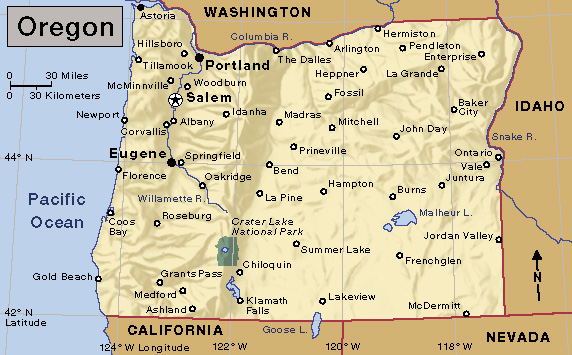
The Port of Portland is one of the largest ports in the Pacific Northwest. Large amounts of automobiles, grain, and lumber pass through the port each year. Barge and cargo ship lines, rail freight lines, and passenger trains serve the city. Portland International Airport lies about 6 miles (10 kilometers) northeast of the downtown area. Portland has one daily newspaper, The Oregonian.
Education.
An elected Board of Education supervises Portland’s public school system. The city also has a number of parochial and private schools.
Portland State University is the city’s largest four-year institution of higher learning. Other colleges and universities in Portland include Lewis & Clark College, Reed College, the University of Portland, and the University of Western States. The Oregon Health & Science University in Portland includes the state’s medical and dental schools. The main library and branches of the Multnomah County Library serve the city.
Cultural life.
Portland has a ballet company, an opera company, a symphony orchestra, and numerous theater companies. The city’s museums include the Oregon Historical Society’s Museum, the Oregon Museum of Science and Industry, the Portland Art Museum, and the World Forestry Center’s Discovery Museum. Forest Park, a hilly, 5,157-acre (2,087-hectare) wilderness, ranks as the largest woodland within a U.S. city. The International Rose Test Garden has won fame for the beauty and variety of its flowers.
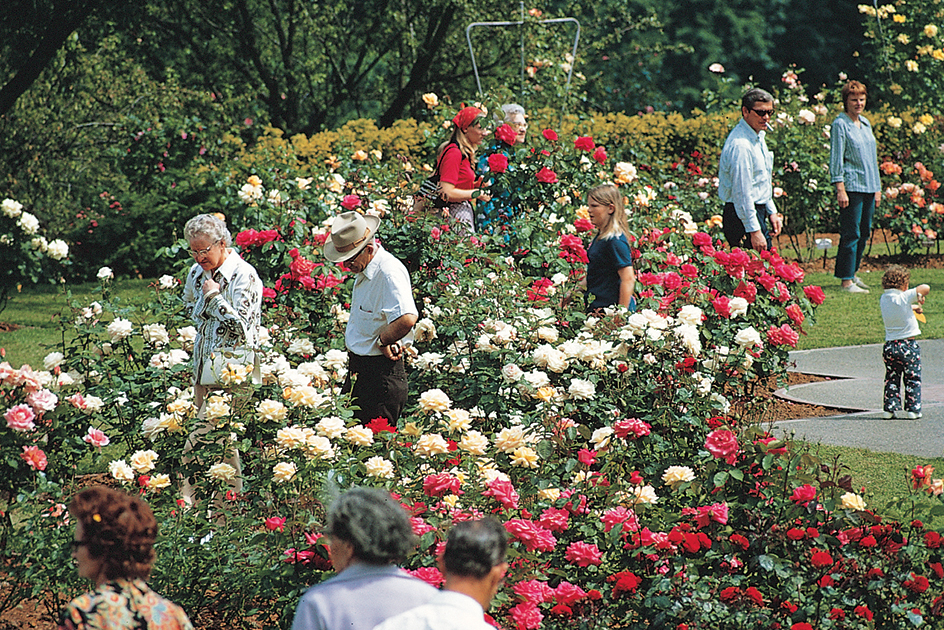
Annual events in Portland include the Rose Festival in May and June. The city is home of the Portland Trail Blazers of the National Basketball Association and the Portland Timbers of Major League Soccer.
Government.
Portland has a commission form of government. The voters elect a mayor and four commissioners, all to four-year terms. Each of these five officials heads one or more departments of the city government. Together, they make up the City Council, which votes on city laws. Portland gets most of its revenue from business licenses and property and utility taxes.
History.
Chinook Indians lived in what is now the Portland area before white people first arrived there. In 1829, a French-Canadian trapper named Etienne Lucier built the first log cabin in the Portland area. Two land developers from New England, Asa L. Lovejoy and Francis W. Pettygrove, founded Portland in 1845. In 1851, when Portland was incorporated, it had 821 people and was the largest town in the Pacific Northwest. 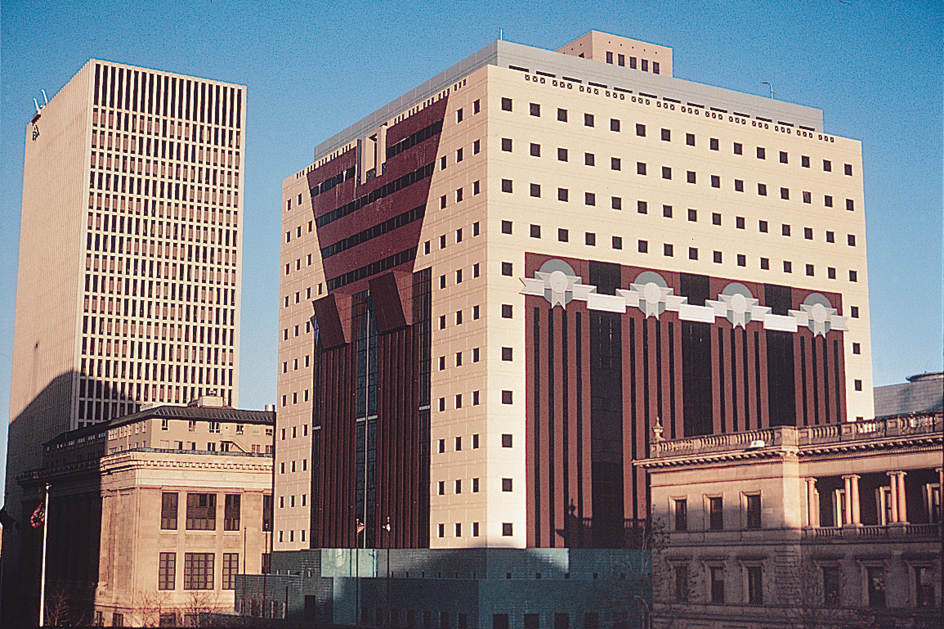
Portland grew steadily from 1850 to 1900. Settlers came by covered wagon to Portland and nearby farm areas. Portland became a trade center for fur, grain, lumber, canned salmon, and wool. In 1883, rail lines linked it with the East. The improved transportation encouraged the growth of manufacturing in the area.
Between 1900 and 1910, the population of Portland grew from 90,426 to 207,214. The rural population of the Pacific Northwest also increased, providing new markets for Portland manufacturers. The city served as a supply point for gold miners in Alaska and in Canada’s Yukon during the late 1890’s and early 1900’s. A world’s fair, the Lewis and Clark Centennial Exposition of 1905, brought 3 million visitors to Portland. Many of them settled in the city.
For many years, the lumber and wool products industries provided about two-thirds of Portland’s jobs. But in 1933, a huge forest fire called the Tillamook Burn destroyed the city’s main timber supplies. Many Portland sawmills closed permanently after this fire, which swept across nearby Tillamook County.
In the 1930’s, new dams on the Columbia and Willamette rivers provided cheap electricity for Portland. As a result, many industries that depended on electricity came to the city. They included metal processing and the manufacture of metal products. In the early 1940’s, during World War II, shipbuilding and other war-related industries brought nearly 100,000 people to the city. Many of these people stayed after the war ended in 1945. In 1950, Portland had a population of 373,628.
During the 1960’s, urban renewal projects replaced many old structures near the downtown area with apartment and office buildings. In the 1970’s, the Portland Transit Mall was completed in the downtown area. This open mall serves as a center for the city’s bus traffic. Other construction projects of the 1970’s included the River Place residential and commercial development on the Willamette River, the Pioneer Place office and shopping mall in downtown Portland, and the Oregon Convention Center in southeast Portland.
The first line of the Metropolitan Area Express (MAX) Light Rail system, linking downtown Portland with the eastern suburb of Gresham, opened in 1986. An extension of that line, from the downtown area to the western suburbs of Beaverton and Hillsboro, opened in 1998. A line to Portland International Airport opened in 2001, and a line to the Portland Expo Center in 2004. A line linking Clackamas and other southeastern suburbs to downtown opened in 2009.
In the late 1990’s, renewal projects included the redevelopment of a warehouse area north of downtown. The area became the Pearl District, which includes art galleries, restaurants, shops, and residential buildings.
Between 1950 and 1980, the population of Portland declined slightly, but the population of the metropolitan area increased. Since 1980, the city’s population has again risen, reaching 652,503 by 2020. The population of the metropolitan area continued to grow.
